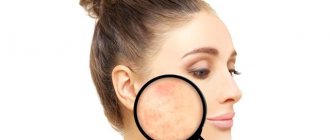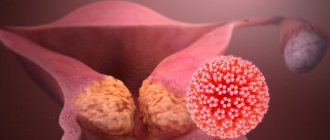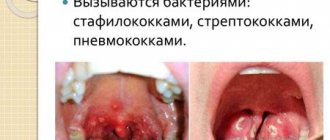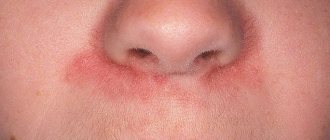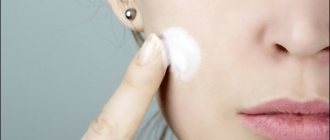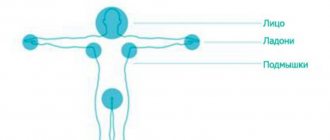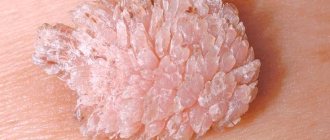If you are concerned about facial asymmetry:
- Don't rush to see a surgeon!
Any surgical intervention is a risk. Especially if the operation does not eliminate the cause of the problem.
- Don't rely only on cosmetics!
You can paint and repaint a damaged car as much as you like. But that won’t stop her from being beaten. It's the same with the face...
Treatment at the Orto-Artel clinic without surgery!
We will help you understand the correction of facial asymmetry. And we will decide “wisely”, based on the reason.
Problems of facial aesthetics are of more and more concern to our patients. “How to correct facial asymmetry?”, “How to correct an asymmetrical face?” or “If the face is not symmetrical, what should I do?” We hear such questions very often. But how is this usually solved in other clinics? Cosmetologists, plastic surgeons. And all of them are in demand and promise good results. But is turning to a surgeon always justified? And can a cosmetologist always help? And most importantly, is there an alternative to surgery and all these “Botox”, “golden threads” and other “medicines” for the face? Indeed, very often, in pursuit of aesthetics, wanting to get results here and now, patients forget about the main thing - health.
Treatment in installments
The Orto-Artel clinic offers installments for the entire process of treating any disease. Personal conditions are considered on an individual basis.
Find out more
or call 8 (495) 128-11-74
One of the most common problems is various types of facial deformities. The range of such asymmetries, as well as complaints and tasks that patients set for themselves in order to achieve a harmonious face, is very diverse. Some people don't like the fact that the right and left halves of the face are not the same. Someone is concerned about different eye sizes (see “Deformation of the cranial bones”). Someone has an asymmetrical jaw: the lower jaw moves to the side when opening the mouth, or the center of the upper jaw (the line between the central upper incisors) is shifted to one side (see “Crossbite”). And some people have ears at different levels and protruded differently. Someone’s jaw protrudes (see “Mesial bite”) or, conversely, “sinks” (see “Distal occlusion”). And someone has an asymmetrical chin.
In general, our patients have a great many complaints and complaints. But, despite this variety of expression and manifestations of facial asymmetries, these problems are corrected, as a rule, for some reason very superficially: either cosmetologists “inject”, “pump” or “rub” something, or surgeons do plastic surgery, something cutting or enlarging.
But it should, however, be understood that an asymmetrical face is not a diagnosis. This is just a symptom of a problem. A symptom, in medical terms. But treating symptoms is a thankless task. It is much more important to find the cause of the problem and eliminate it.
Diagnostics is the first and key step in the treatment of facial asymmetry. Do you want to know why it’s impossible to do without diagnostics?
Symptoms of facial asymmetry
The severity of facial asymmetry and the reasons that led to the appearance of defects are the two main factors on which the clinical picture of the pathology depends. Minor violations that occur due to age-related changes are considered to be only an aesthetic problem. Gross disproportion of the facial part of the body is usually observed after severe injuries or serious illnesses. Symptoms of changes on the side of the injury are easy to notice externally:
- facial muscles are not involved in movements;
- the corner of the mouth drops;
- articulation is impaired;
- natural folds on the forehead and in the area of the nasolabial triangle are smoothed out;
- the patient cannot completely close one eye;
- while eating, the work of the lacrimal glands increases;
- there is no facial expression on one side of the face.
Gymnastic exercises
Gymnastics for the facial muscles is performed daily 5–7 times, starting with performing each exercise once, gradually increasing the number to 3 approaches.
Facial muscle movement is stimulated using the following group of exercises:
- Smile as widely as possible with your lips closed. Hold the achieved position for 5 seconds.
- Fold your lips into a “bow” and stretch them out as far as possible for 5 seconds.
- Open your mouth as wide as possible for 5 seconds. Close your lips as hard as possible for 5 seconds. Relax your muscles.
- Pronounce the vowel sounds “a”, “u”, “o”, “i”, “e”, “s” in front of the mirror as long as possible. The exercise stimulates the work of not only the facial muscles, but also the speech apparatus.
- To begin with, wink several times with one and the other eye, then alternate winks with different eyes.
- Raise your eyebrows slowly to maximum height, and lower them just as slowly.
- Move the protruding tongue up and down and left and right to the maximum amplitude.
- Move the lower jaw to the right, fix for 5 seconds. Move to the left, hold for 5 seconds. Return to original position.
- Take as much air into your mouth as possible until your facial cheeks are rounded. Keeping it from exiting through the mouth and nose, alternately press on the cheeks with your fingers on both sides.
The harmonica is an effective home exercise device for rehabilitation after a stroke. Daily exercises of 3-5 minutes stimulate the facial muscles, saturate the body with oxygen, improve blood circulation, and train memory.
Massage
Massaging the facial muscles stimulates blood circulation, improves metabolism, reduces muscle tone, and removes puffiness.
The course of treatment (type of massage, number of procedures) is determined by a neurologist during the rehabilitation period, 2 weeks after the stroke.
Stages of development of facial asymmetry
- First stage. The functionality of the facial nerve is preserved, no significant changes are observed.
- Second. A slight curvature appears when a person closes their eyes or smiles. The patient has weakness of the facial muscle tissues.
- Third. Signs of asymmetry are more pronounced, difficulties appear in raising the eyebrows, muscle mobility is partially limited, and there may be spasms.
- Fourth. The face becomes asymmetrical even at rest, the eye does not cover completely, and the position of the mouth is disturbed.
- Fifth. The main sign is the absence of contracture; movements of the injured side are imperceptible.
- Sixth. Muscle tone decreases, the patient complains of the inability to move the muscles of the affected part of the face.
If any signs indicating a violation of the symmetry of the front sides appear, it is recommended to consult a specialist.
Blepharospasm
The orbicularis oculi muscle surrounds the human eye socket on the face. Thanks to it, a person can close his eyelids and close his eyes. A condition in which involuntary contraction of this muscle occurs is called blepharospasm.
The main causes of blepharospasm:
- Facial paraspasm. This disease usually occurs in older people. It is believed to be caused by an imbalance between parts of the nervous system. Blepharospasm is one of the manifestations of facial paraspasm. The second possible manifestation is oromandibular dystonia - grimaces, trembling of the lower jaw, its involuntary movements. Sometimes blepharospasm is combined with oromandibular dystonia;
- Parkinson's disease;
- Multiple sclerosis;
- Meningitis, meningoencephalitis;
- Atherosclerosis of cerebral vessels, cerebrovascular accidents;
- Poisoning with toxic substances and certain medications;
- Inflammatory diseases of the eye (keratitis, conjunctivitis), nose, paranasal sinuses, teeth. As a result of the spread of the inflammatory process, the branches of the trigeminal nerve are irritated and reflex blepharospasm occurs.
Typically, a sick person begins to blink quickly, gradually the tension of the orbicularis muscle increases, and the eye narrows. At times, strong involuntary squinting occurs. Because of this, the eye cannot fully perform its functions and severe inconvenience occurs.
With such symptoms, you need to visit an ophthalmologist and neurologist. After the examination, the doctor may prescribe an electromyography or MRI of the head. It is important to identify the disease that led to the development of blepharospasm - this will help to correctly prescribe treatment.
Treatment
- Treatment of the underlying disease;
- Sedatives;
- Physiotherapy and reflexology.
- Drugs that improve cerebral blood flow and nervous system function;
- To reduce the tone of the orbicularis oculi muscle, a neurologist may prescribe botulinum therapy.
The greatest chances for a favorable outcome and complete restoration of impaired functions are in cases where proper treatment is started on time. If the first symptoms occur, do not delay visiting a doctor.
It is also worth remembering that sudden facial asymmetry is one of the symptoms of a stroke. This is a dangerous condition. It requires immediate hospitalization in a hospital.
Prices
| General: | |
| Initial consultation with a dental specialist (30 min.) | 2,300 rub. |
| Extended consultation with a dentist, head of Orto-Arteli | 6,000 rub. |
| Consultation with a dentist with a description of the CT scan, drawing up a preliminary examination and treatment plan | 5,000 rub. |
| Spot X-ray | 650 rub. |
| Diagnostics: | |
| Primary diagnosis (two visits) First visit: taking impressions, making plaster models, photos. Analysis of jaw models, multisystem analysis of lateral TRG, OPTG analysis, photometry, diagnosis, development of a treatment plan. Second visit: announcing the results to the patient and discussing the treatment plan with him | from 30,000 rub. |
| Additional diagnostics | from 40,000 rub. |
| Diagnostics in the articulator | from 8,000 rub. |
| Computer cephalometry with axiography | 25,000 rub. |
| TENS | 8,000 rub. |
| Analysis of TRG in direct (frontal) projection | 5,000 rub. |
| TRG analysis in the genioparietal (SMV) projection | 5,000 rub. |
| Postural diagnostics Read more about diagnostics in our clinic | |
Diagnostics
A neurologist diagnoses trigeminal neuralgia. During the first visit, he carefully interviews the patient to find out:
- complaints: nature of pain, its intensity and localization, conditions and frequency of attacks, their duration;
- medical history: when pain attacks first appeared, how they changed over time, etc.;
- life history: the presence of chronic diseases, previous injuries and operations is clarified, special attention is paid to dental diseases and interventions.
A basic examination includes assessing the condition of the skin and muscles, identifying asymmetry and other characteristic signs, checking the quality of reflexes and skin sensitivity.
To confirm the diagnosis, the following is carried out:
- MRI of the brain and spinal cord with or without contrast: allows you to identify tumors, consequences of injuries, vascular disorders; sometimes the study is replaced by computed tomography (CT), but it is not as informative;
- electroneurography: study of the speed of nerve impulse transmission through fibers; allows you to identify the fact of nerve damage, assess the level of the defect and its features;
- electroneuromyography: not only the speed of impulse passage along the nerve bundle is studied, but also the reaction of muscle fibers to it; allows you to assess nerve damage, as well as determine the sensitivity threshold of trigger zones;
- electroencephalography (EEG): assessment of the bioelectrical activity of the brain.
Laboratory diagnostics includes only general studies to exclude other causes of painful attacks, as well as to assess the condition of the body as a whole (usually a general blood and urine test is prescribed, as well as a standard set of biochemical blood tests). If the infectious nature of the disease is suspected, tests are carried out to identify specific pathogens or antibodies to them.
Additionally, consultations with specialized specialists are prescribed: ENT specialist (if there are signs of nasopharynx pathology), a neurosurgeon (if there are signs of a tumor or injury), and a dentist.
Advantages of the Health Energy Clinic
The Health Energy Clinic is a multidisciplinary medical center where every patient has access to:
- screening diagnostic programs aimed at early detection of diseases and pathologies;
- targeted diagnostics using modern equipment and laboratory tests;
- consultations with experienced specialists, including foreign ones;
- modern and effective comprehensive treatment;
- necessary certificates and extracts;
- documents and appointments for spa treatment.
Trigeminal neuralgia is a serious pathology that can seriously disrupt a person’s normal lifestyle. Don't let pain and fear take over your thoughts, get treatment at Health Energy.
Where is surgical treatment for paralysis of the facial muscles performed?
Specialists from the Department of Maxillofacial and Reconstructive Surgery of the Federal State Budgetary Institution NKCO FMBA of Russia, together with the Department of Ear Diseases, have developed and put into practice a unique method of surgical treatment of patients with paralysis of the facial muscles. The first operations on patients with this pathology in Russia were performed by specialists from the Federal State Budgetary Institution NCCO FMBA of Russia - otosurgeon, MD. Hassan Diab and maxillofacial surgeon Ekaterina Orlova.
A healthy person rarely thinks about how important facial expressions are and what role they play in our lives, especially a smile... Smile more often!
How to treat?
If you notice such signs, you need to immediately (preferably within 72 hours from the moment of illness) contact a specialist to prescribe adequate treatment. Typically, experienced neurologists use hormonal therapy in such cases.
If it is discovered that the cause of the disease is a viral infection, antiviral therapy is prescribed. It is necessary to protect the eyes from dryness and use special physical exercises; acupuncture also has a good effect. If necessary, surgical treatment methods are used.
Prevention
Prevention of trigeminal neuralgia is a set of simple measures that significantly reduce the risk of developing pathology. Doctors recommend:
- undergo regular preventive examinations;
- at the first signs of the disease, seek help (the sooner treatment is started, the greater its effect will be);
- eat right, get the required amount of vitamins, minerals, unsaturated fatty acids;
- regularly engage in light sports and gymnastics;
- get enough sleep and rest;
- minimize stress and physical overload;
- avoid hypothermia and harden yourself;
- to refuse from bad habits.

